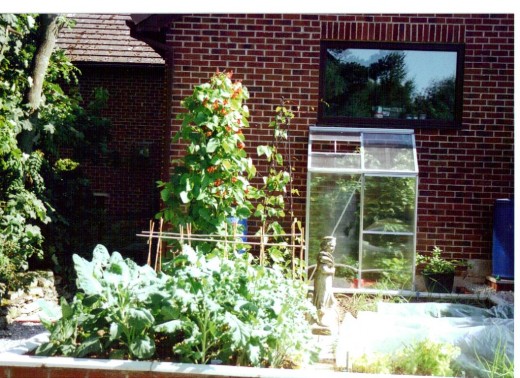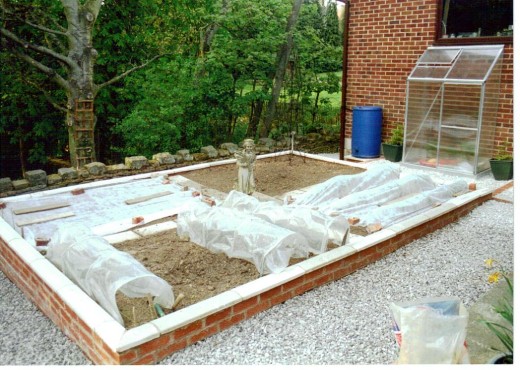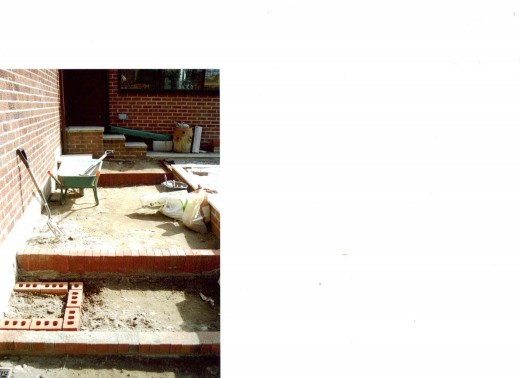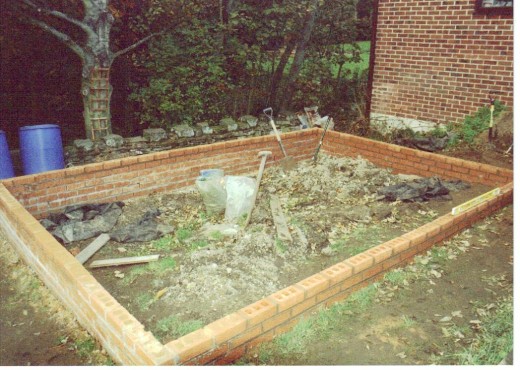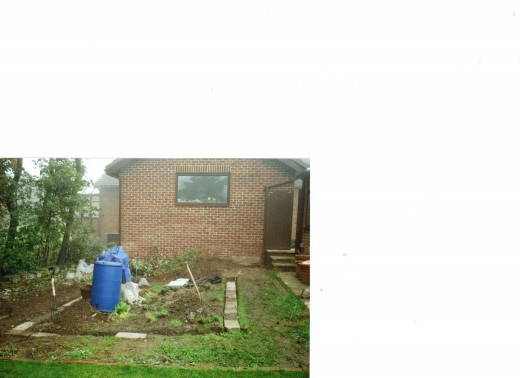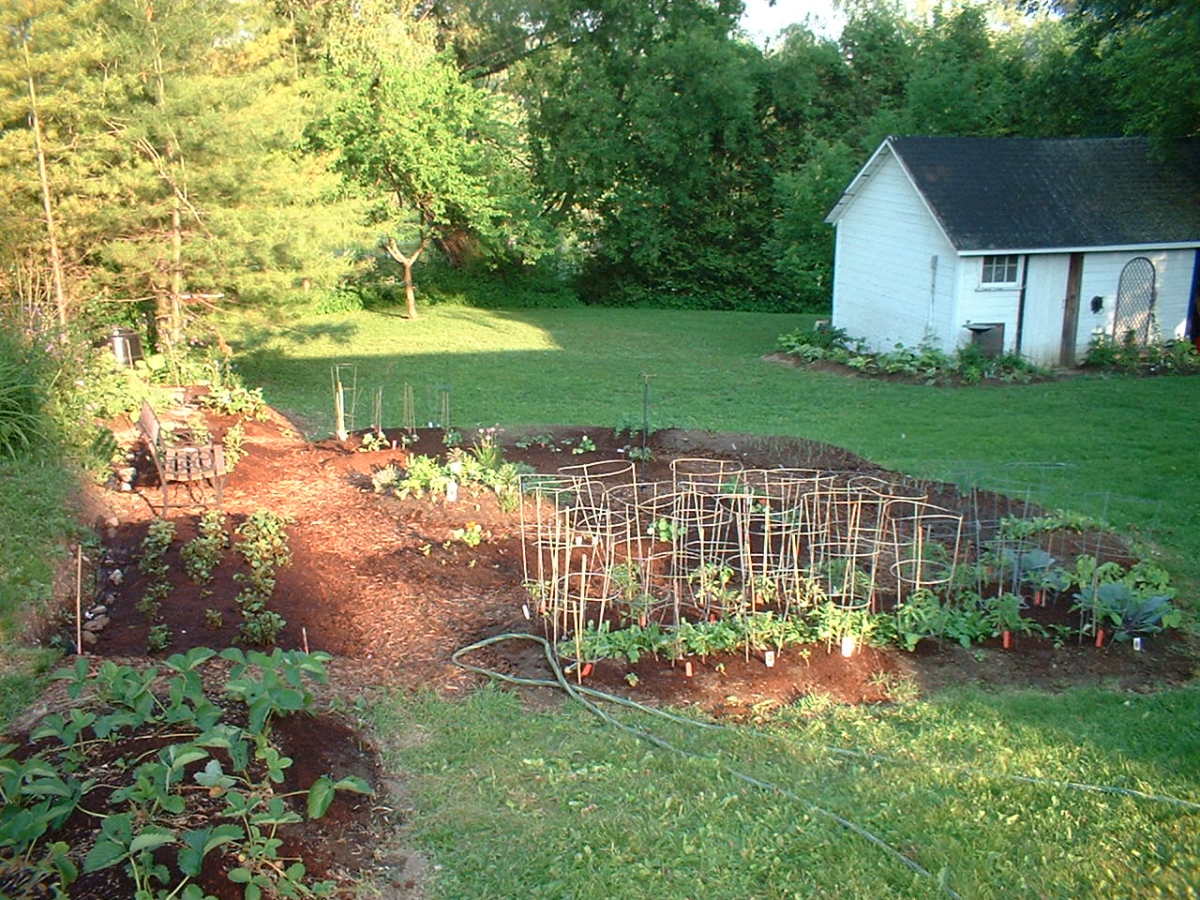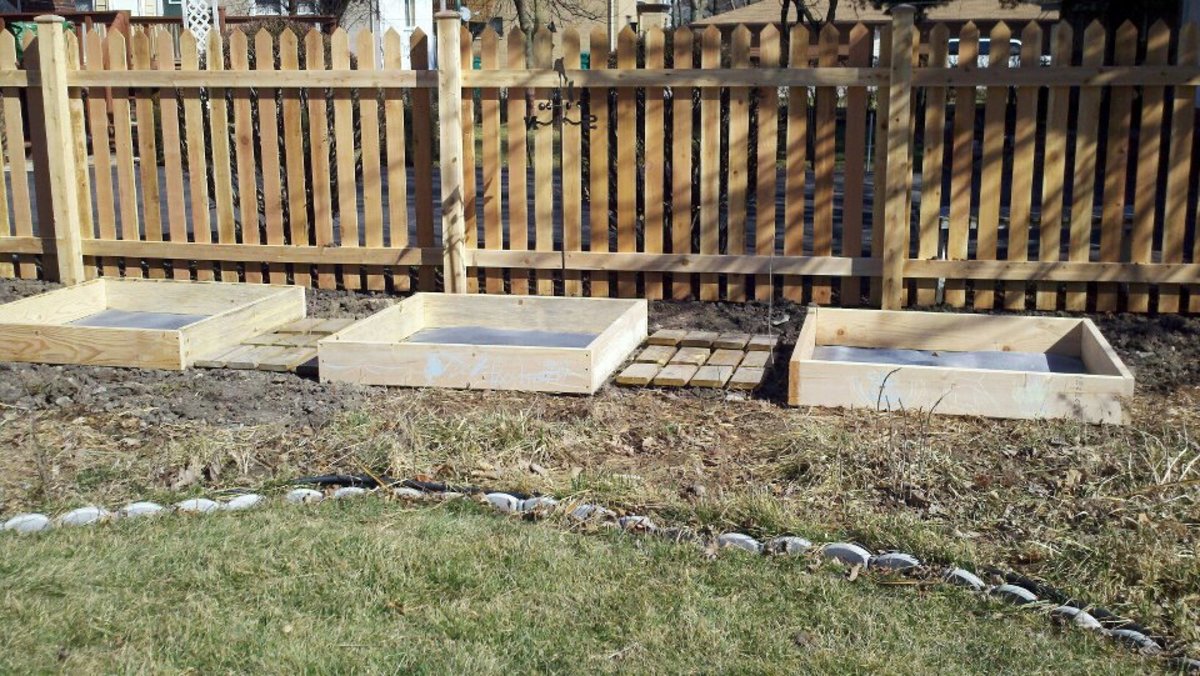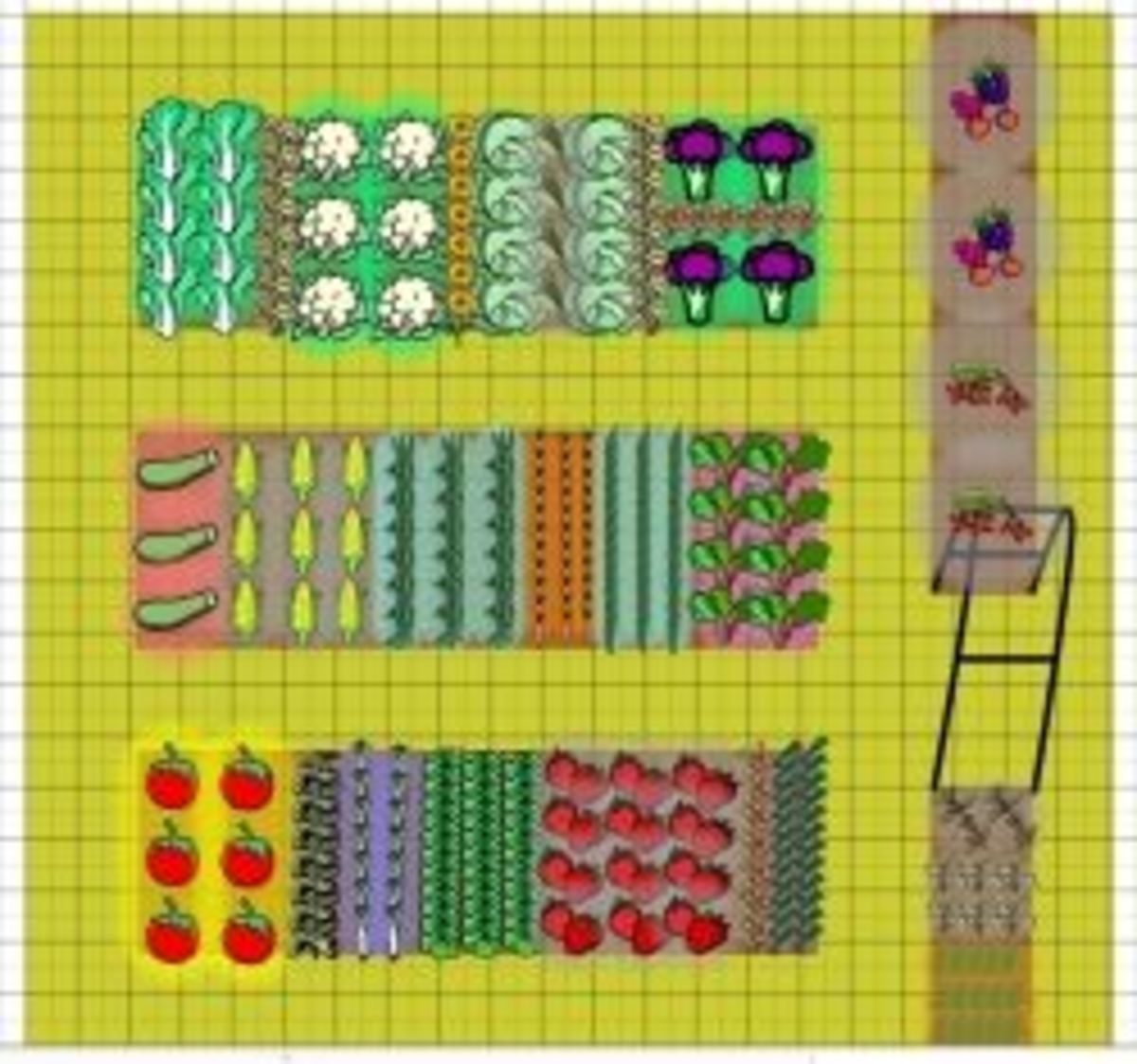How To Build a 'French Potager Design' Style Vegetable Garden Making Raised Garden Beds With Brick Walls.
My French Potager Design Brick Wall Vegetable Garden.
Click thumbnail to view full-size




Be Inspired By Our First Ladies.....
Last year I was extremely pleased to read in the media that both her Majesty, Queen Elizabeth and America’s first lady Michelle Obama would be digging up a patch in their official residences in order to plant a vegetable garden, the first since World War II. It would seem that both families have cottoned onto the fact that organic gardening not only provides extremely tasty food for the table, but also educates youngsters into eating more healthily and shows them exactly where their food comes from, especially important when the pull of the fast food industry is so strong nowadays. Now I appreciate that both ladies will have gotten the very best of experts to carry out this work for them, but I thought that I would share my own recent DIY experience of making raised garden beds by designing, building and planting a vegetable plot from scratch, so that any other amateur gardeners out there can see how easy it is, with a little effort and be inspired to take on the same kind of creative project.
No Room For a Kitchen Garden?
- Click Here For Shortcuts To A Great Looking Balcony Garden.....
No garden? Discover the fastest and easiest way to create a great looking balcony garden for your home....
How Much Time Can You Really Spare?
Just over 3 years ago I sat down and planned my dream garden. As I work full time, I wanted a large part of the garden to be lawns with herbaceous flower beds that could take care of themselves in order to free up any spare time that I had from my work so that I could spend it on my vegetable plot. I think this is an important point to remember when first planning a garden for yourself, that is, to decide beforehand how much time you can reasonably spare tending your plot. It’s no good planning and implementing very labour intensive gardens, that say, require 10 to 12 hours per week of your time if you can only spare 3 to 4 hours per week because you are at work all day or have family commitments.
How To Design A Vegetable Garden With Brick Wall Raised Beds
The plot on which our house stands is an awkward shape and before I designed or built anything I had to plan for several problematic areas such as poor soil (yellow clay), shady places with some north facing areas (i.e. total shade), sloping or uneven ground and nearby mature woodland which caused other problems such as some shade (but not enough to stop me from having a vegetable plot), root damage to outbuildings, reduced soil moisture and nutrient depletion. I have to say that I put a lot of thought and energy into my vegetable garden plans and designs as this was where I had decided that I wanted to spend most of my spare time. The vegetable plot was also going to be overlooked by my newly built sun lounge/conservatory, where due to the wonders of central heating I was planning to spend quiet a lot of my time all year round, therefore it had to look good as well. I finally decided on a decorative and more formal ‘potager design’ (ornamental French kitchen garden) that I had read about which would be easy to look after, productive and had easily maintained raised gardens beds. Raised gardens beds were an essential ingredient because I needed to:-
1. Counter the problems of a poor heavy clay soil that lacked drainage.
2. Overcome a sloping aspect to the land.
3. Help me in my middle age and later….. I am in my mid 40’s, but I did not want to be constantly bending down to tend to my vegetables and end up getting back ache.
4. Reduce the constant need to dig over the plot, which can be very time consuming and labour intensive.
Want To Build Your Perfect Garden? Then Just Click Below....
- Creativity Download - Hypnosis MP3 | Hypnotic World
Become more creative by unleashing the power of your subconscious mind.
Making Raised Garden Beds With Brick Walls - Where Possible Recycle
Although the house was a relatively new build, only 20 years old, the previous owner had not done any major improvements with either the house or garden. As my partner and I cleared the land of weeds and rubbish, we found lots of building items half buried that we felt could be recycled and used again to build our ‘french potager garden’ such as spare bricks, breeze blocks, old paving slabs and bags of sand that had been discarded from the original build of the house. All these potential raised garden bed materials were put aside and saved for when it was time to build upon our ‘potager' garden plans or raised gardens designs.
Making Raised Garden Beds With Brick Walls - Getting Technical - Brick Calculations
After measuring out the size of the plot for where the actual vegetables would be grown, 4275mm x 3600mm, I calculated that we would need about 381 bricks and about 34 coping stones. To calculate how many bricks you will use, you need to know that a standard brick is 215mm long, you then have to make an allowance of 10mm for each mortar joint in order to work out the number of bricks needed for each course (level). For the size of our plot, this worked out at 21 bricks x 16 bricks which we then multiplied by the number of courses we were going to have – 6 for the deepest end and 3 for the shallowest end. I allowed 5% for breakages and also extra bricks to build the bases for the water barrels, so we bought a full pack of 500 new bricks from a local DIY supplier in order to supplement the number of recycled bricks. In the end, we found that we could not use our recycled bricks with the new ones as we found we were mixing two slightly different sized bricks, old imperial sizes with new metric ones, so we actually used the recycled bricks, in addition to some new bricks, to help edge the paths rather than build the walls of the ‘potager’. (See Photograph 'Paths and Water Tub Bases'). However we did find a use for the larger breeze blocks, as we were building on sloping ground, these were used to help build up the stepped footings or wall foundations and reduce the quantity of concrete we needed to support the foundations of the walls. (See Photograph 'Laying The Foundations')
Growing Your Own Vegetables Can Save You Money Too!
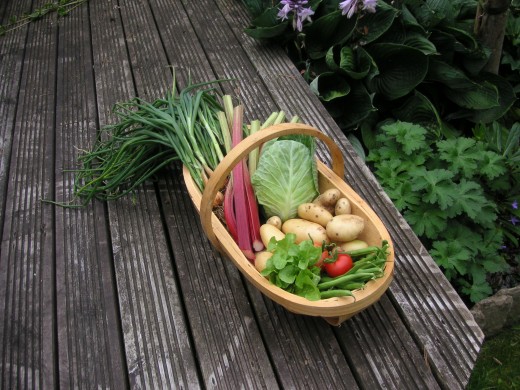
Making Raised Garden Beds With Brick Walls - My Wall Building Tips
The actual wall building took place in the Autumn of 2006. (See Photograph 'The Outer Shell'). My partner and I had built reconstituted stone block walls in the garden before, but never in red brick. However, since they were not really load bearing walls or served any other purpose than to hold in the soil of the raised gardens beds, we thought that it would be fun to have a go ourselves. We consulted several DIY books on the matter and found some excellent tips which we included in our wall building such as:-
1. Leaving all vertical joints in the first course of the brickwork open, so that water can drain through the masonry and the wall does not act like a dam.
2. We used a spirit level regularly to check the level of the courses.
3. We bought coping stones (to create a roof) in order to keep the rain out of the wall.
4. We worked with only small quantities of mortar - being new to wall building you will be slower than a professional and the mortar may dry out too fast and go to waste.
The one thing that we did not think about and only found out afterwards was that retaining walls often develop white staining called efflorescence which is caused by mineral salts being left on the surface of the brick after water has evaporated through it. Apparently it can be prevented if the brick is coated on the inside by bituminous emulsion before back filling with soil….however when you are new to this game, you cannot think of everything!
How To Layout a Vegetable Garden With Brick Wall Raised Beds
After the walls had been finished, we then lined the base with weed suppressant material and began to back-fill the cavity with around 25 tonnes of scanned (de-weeded) topsoil. To this we added horse manure, leaf mould (which is now added on a yearly basis), decomposed kitchen waste and left over grow bags /compost to help develop a loam based soil, increase the soils ability to feed our future vegetables and to help with water retention. I added all weather paths, using the paving slabs that were also found abandoned in the garden, in order to make it easier to tend and harvest crops, reduce soil compaction and muddy surfaces in wintertime and on wet days.
How To Design a Vegetable Garden With Brick Wall Raised Beds: The All Important Finishing Touches
The ornamental statue was given to us by next door neighbours from our last house who were downsizing to a retirement flat by the seaside that had no garden. (See Photograph 'The First Planting'). They had managed to give away most of their gardening ornaments and equipment to either their children or friends, but found that nobody wanted this particular statue. As the statue depicted a Roman or Grecian lady holding a wheatsheaf in her arms, similar to the goddesses of plenty, Ops or Rhea, I thought it appropriate to add it to the centre of the raised gardens beds to act as a focal point and continue the French Potager design theme of a more formal kitchen garden. I also invested in 2 x metal obelisks for the runner beans to grow up every year as I found that ready made bean poles were wider in circumference and took up too much space for a small plot.
No Excuses Now!...... It's Time To Design, Build and Plant Your Own French Potager Vegetable Garden....
Benefits Of A Brick Wall 'French Potager' Design Vegetable Garden
Although the ‘French potager’ was time consuming to build and prepare, it was worth the effort as I find that time/effort is saved and waste reduced over the long run because of the following:-
1. As the soil is never compacted, I have reduced the need to dig over the plot regularly.
2. Regular mulching improves soil condition but also means I do not have to weed or water as often.
3. I can quickly and easily reach across and work smaller vegetable beds, than with larger plots.
4. Deep soil encourages the plants to root more deeply and so they can be spaced closer together equalling more plants in a smaller area.
5. Due to my compact site, I stick to pest or disease resistant vegetables to grow, meaning less waste.
6. To also help prevent pests and diseases, I practice and plan yearly crop rotation, which saves time in the long run as I know beforehand what I can plant in the future.
7. I utilise crop covers to extend the growing season to get more out of my smaller plot and help keep pests at bay.
8. One plot section has now been planted with rhubarb* an easy to grow, repeat heavy cropper that saves lots of time as it virtually looks after itself and only has to be planted the one time.
*Rhubarb, great for crumble puddings, is notorious for taking over a garden as it spreads so quickly. However if the roots are confined this does not occur, so the section where it was planted was dug out last year and ‘lined’ with second hand kitchen wooden doors, cut to shape, in order to create a barrier and stop it from totally invading my raised gardens beds.
Was Building My Brick Wall Vegetable Garden Worth The Time and Effort?
In a word, Yes. I have a very stressful full-time job and the little free time that I do have I want to spend on doing something that I enjoy. The pleasure in growing my own produce satisfies several needs in me including being able to grow organically wherever possible; putting something on the table that I have grown myself and experimenting with types of vegetables that I have never tried growing before. (See Photograph, 'At Last Some Produce'). I have created a garden that I can now easily manage with a little forward planning, which when time is short is essential. Believe you me, I would not change a thing about my 'potager design' kitchen garden and I only hope that you too will be inspired to design and build your own little sanctuary after reading and seeing for yourself how easy it is to achieve if you really put your mind to it. Go on, be creative and let me know how you get on!

